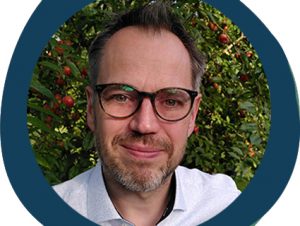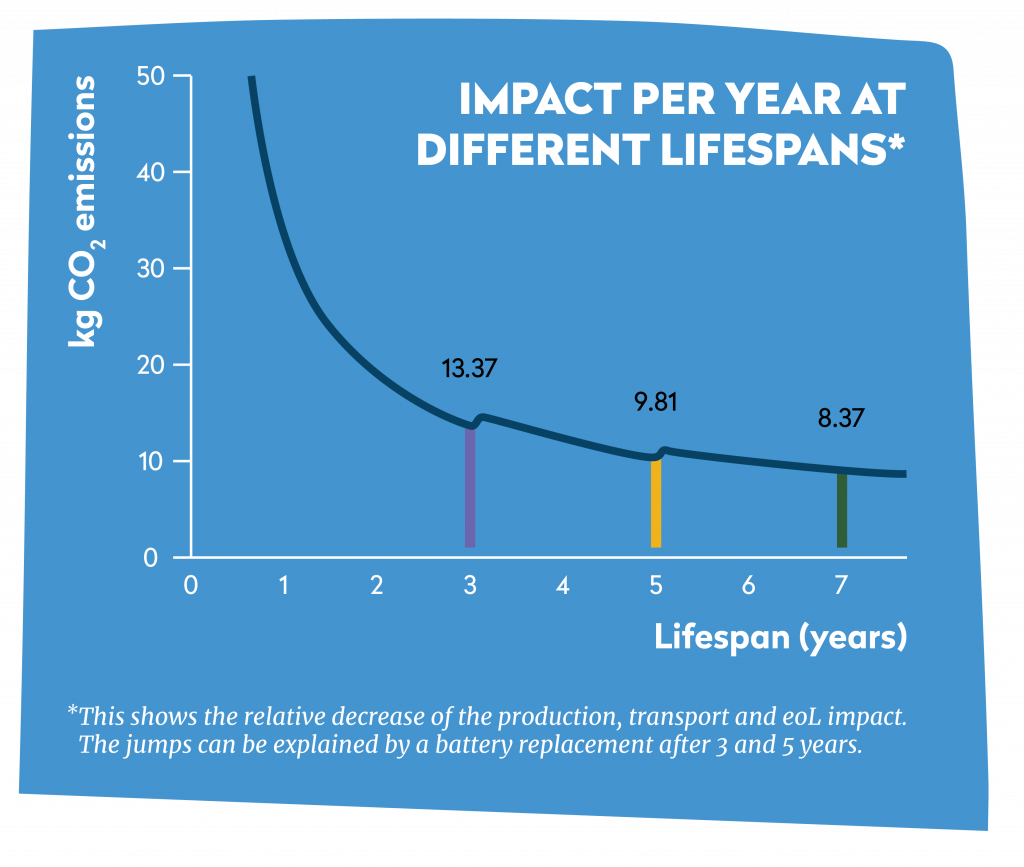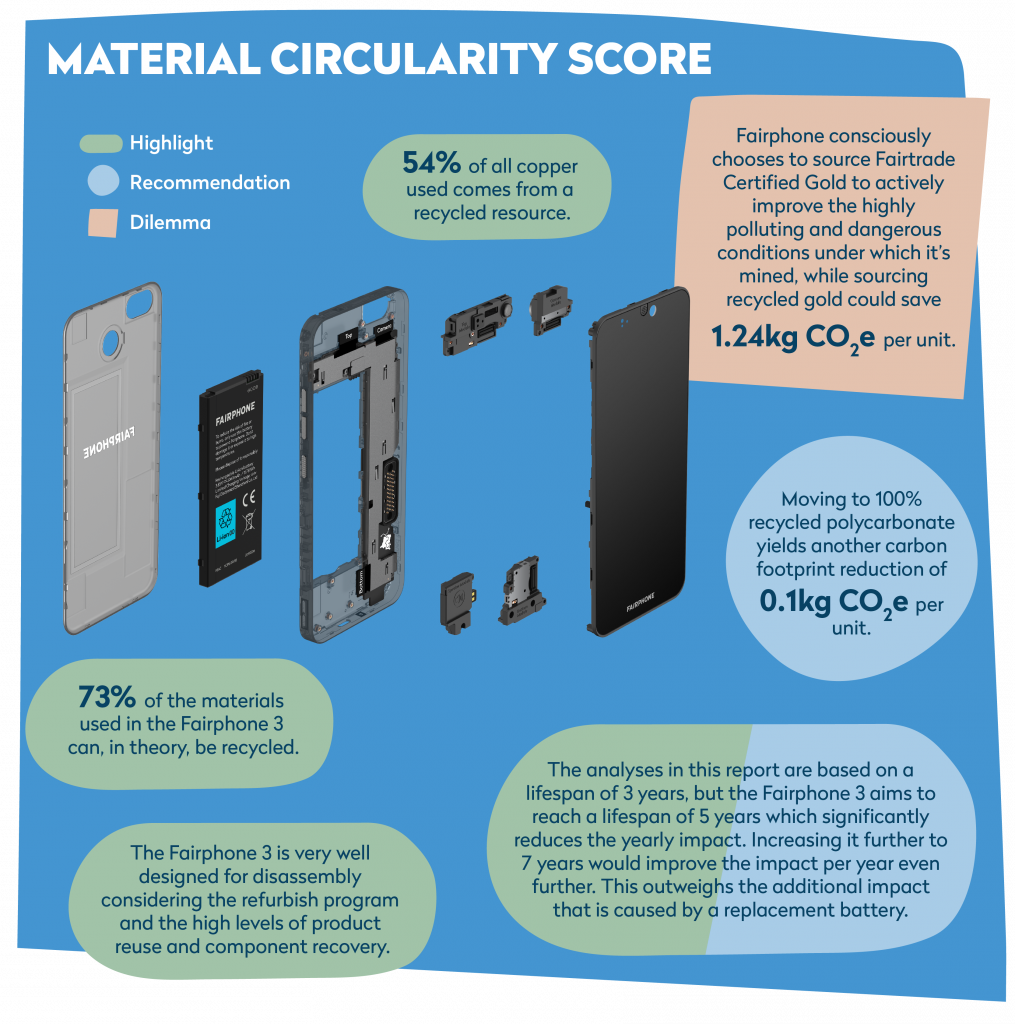Originally published at: Pioneering the path to circularity - Fairphone
The “circular economy”, a concept that is becoming more and more prominent in the current Zeitgeist. In short, it’s an economic system aimed at eliminating waste and facilitating the continual use of resources. A world in which we are genuinely circular is one where materials can be used, recycled and reused to their fullest extent.
There’s a catch, of course: for most materials, it’s quite unlikely that recycling alone will be able to meet humanity’s growing demands for them, at least in the coming decades. In addition, recycling also causes waste and we lose a notable amount of materials during the process. While globally we are recycling more, there are barriers.
On the journey towards a circular economy, it is critical to assess opportunities and acknowledge the limitations. Developing a mutual understanding of the needs and requirements will ultimately drive the preservation of resources and promote longevity. This is where the KPN-led initiative of the product circularity report comes in.
Enter the product circularity report
KPN identified the need for frontrunners of circular initiatives in the telecom sector. As one of the first telecom operators to actively work on circularity with its suppliers, KPN sought a way to measure and visualise the circularity of products. This is when KPN decided to become a launching customer of Circular IQ and KPMG’s software-based approach to collect and analyze product data, to produce insights into the level of circularity of a product, and give recommendations for further improvement.
To further refine the standards and dial in the reporting, Fairphone collaborated on the report. It took several multi-layered, critical discussions to demonstrate the complexity of this joint task.
So what do we have to show for it? The Product Circularity Report of the Fairphone 3 >>
Lessons learned
Now that the Fairphone 3 has been analyzed and the insights discussed, the parties involved are looking back to evaluate the lessons learned and share insights from diving into product circularity.

Thea Kleinmagd, Fairphone
“Since Fairphone has been the first smartphone manufacturer participating in KPN’s project, we experienced that there is no one-size-fits all approach in circularity reporting. Every product group has its own big sustainability challenges and thus opportunities to yield the highest positive impact. The tool reconfirmed longevity as the most impactful intervention for smartphones and highlights the dilemmas between fair mined material benefitting people, versus circular materials benefitting the planet.”

Edwin Rutten, KPN
KPN (Edwin): “In the electronics industry, there is still a way to go when it comes to transparency in the supply chain. Having product data available on the material level is not yet an industry standard. Companies like Fairphone show good practice, but the challenge is to scale up and standardise. Next to this, we need to understand and show the impacts of circular design during the lifecycle of a product. This allows for common understanding and working together on systemic improvement. The cooperation with Fairphone, KPMG and Circular IQ is a good example of this.

Mart Beune, KPMG
“A mobile phone is a very complex device with lots of different materials needed for production, with lots of different materials needed for production. Finding the right balance between what aspects to focus on brings dilemmas. Challenges that, to us, Fairphone has very well spotted and makes conscious decisions to step-by-step improve every day. Presenting and communicating these trade-offs in a clear and understandable way is a key challenge since organizations and consumers are more demanding on sustainability and transparency every day. These insights are often hidden in complex LCA studies, but can now be visualized more effectively.”
Insights and key findings
There are numerous insights and findings to share, which are available in the detailed report >> (link). We want to highlight a few takeaways that were the direct result of the open collaboration and discussions.
The newly found insights and their presentation sparked an in-depth discussion between KPN and Fairphone, allowing both parties to understand better where their sustainability agenda’s meet. An example of this is the trade-off between focusing on recycled content or fair mined (e.g. Fairtrade gold). The recycled supply of various materials will only be able to cover a minor share of the total demand in the coming decades, just because there is not enough which could be recycled. Although fostering the use of secondary resources is important, improving the environmental and social conditions of mining for numerous materials is therefore at least as crucial. Trade-offs like these are inevitable in a circular economy but often not transparent. The data-backed insights helped steer the conversation to understand Fairphones efforts better and the reasoning behind them.

Visual adapted from KPMG’s and Circular IQ’s Product Circularity Improvement Report.
Fairphone strives to promote recycling since every electronic product will become e-waste one day. However, understanding the limits of recycling has strengthened their conviction that repairability and lifetime extension are just as important to keep the value of the materials used in our products at their highest level for as long as possible. This approach is not yet mainstream, but it’s starting to gain recognition. The reason is simple: if we use our phones twice as long, we only need to produce half the amount of phones, lowering the industry’s environmental and material footprint. By focusing on simple DIY repairs – replaceable parts, modular upgrades, and extended software support – Fairphone makes it easier to use phones far beyond the average industry lifespan.
In the case of the Fairphone 3, we are talking about at least five years, which is about double the average market lifespan of smartphones. This is enabled by the modular architecture of the phone, allowing for module upgrades and easy repair. Thereby, the impact of e.g. a battery replacement can easily be compensated by a longer lifespan (see graph). The product system entails a phone and module take-back program which provides reusable or refurbished parts for repairs, goods to the secondary market or input for recycling.
Visual adapted from KPMG’s and Circular IQ’s Product Circularity Improvement Report.
Where do we go from here?
Findings of the investigations into the Fairphone 3 have found their way into strengthening its successor, the Fairphone 4. To underline Fairphone’s commitment to longevity, the newly released model comes with a 5-years manufacturer warranty – an industry first. Overall, the recyclability of the phone has climbed up to 75% and Fairphone 4 contains 60% recycled plastics as compared to 40% in the prior model. Furthermore, the scope of the focus materials has been extended from 8 to 14 materials, e.g. leading to sourcing of ASI certified aluminium.
“It’s encouraging to see that topics like these start to take root in the wider electronics industry. Real change will be driven by a joint effort from small players like Fairphone, major industry players like KPN, policymakers and the consumer.” – Thea Kleinmagd, Fairphone
“We are very enthusiastic about our product circularity program and are expanding this with more products that are being assessed. On the one hand, we need in-depth insights and supplier dialogue to identify focus areas and dilemmas. On the other hand, we are seeking ways to scale up to address our full operations and supply base. This will continue to drive change in the telecom sector and achieve our circular goals.” – Edwin Rutten, KPN
